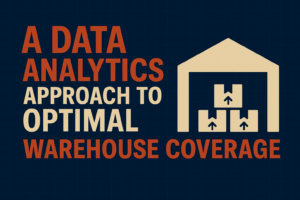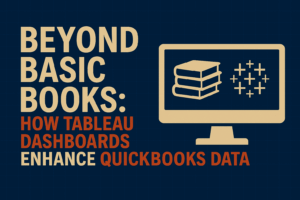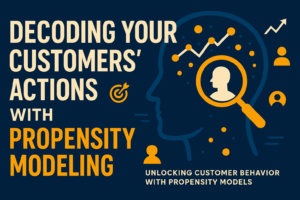Data analytics helps warehouse operators be data driven. Find out how.
Read MorePropensity Modeling Demystified: Predicting Customer Behavior for Growth (Video Series)
Propensity models are a broad group of models that are prolific in marketing analytics. These models provide the backbone of a predictive marketing analytics build out. This article contains a three part series on propensity models that describe what propensity models are, how to implement them, and finally a real world example of a propensity model.
From Data to Decision: How Propensity Models Drive Business Insights (Video 1)
This video introduces the concept of propensity modeling and emphasizes its importance for businesses. Propensity models use advanced statistical techniques to predict future customer actions based on their past behaviors and interactions. By harnessing predictive insights from these models, companies can make informed decisions, optimize strategies, and proactively influence outcomes in their favor.
Then, the video explores three compelling use cases for propensity models:
- Customized Customer Experiences: Propensity models help understand customer behaviors and interactions, enabling businesses to provide personalized experiences, boost customer satisfaction, increase loyalty, and create win-win situations.
- Optimizing Conversion Rates: Likelihood to buy models leverage data points like website visits, marketing touchpoints, and form fills to identify potential buyers, allowing companies to target customers more likely to make a purchase.
- Efficient Marketing: Response modeling within propensity models forecasts the likelihood of a person responding to a marketing touchpoint. This helps businesses optimize resource allocation by reaching out to those most likely to respond, making marketing efforts more efficient.
The video concludes by highlighting that these three use cases are just examples of how propensity models can facilitate efficient business growth.
Driving Business Value with Propensity Models: A Practical Roadmap (Video 2)
This video provides a step-by-step guide on implementing a propensity model, which can help businesses gain powerful insights into customer behaviors and make data-driven decisions. The key steps in the process are:
- Data Strategy: Defining the project’s goals, identifying available data, and setting clear project outcomes to ensure the success of the model.
- Data Collection: Gathering relevant data to build the model, guided by the established data strategy.
- Data Processing: Cleaning and preparing the collected data, including handling outliers, missing values, and combining multiple data sources into a single dataset.
- Model Selection: Choosing an appropriate model, such as logistic regression or random forest, based on data size, structure, and the desired outcomes.
- Model Building: Creating a script to build and optimize the model, focusing on accuracy and stability. This step often involves using tools like R or Python and skilled data scientists.
- Model Implementation: Deploying the model for business use, often through strategies like decile scoring to target specific customer segments.
- Reporting: Continuously monitoring the model’s performance to ensure it aligns with defined goals and provides the desired results.
Unlocking Sales Success: How Data-Driven Insights Skyrocketed Contact Rates
This video discusses a case study where a company improved its outbound sales strategy using data-driven insights and a propensity model. The initial problem was that the outbound sales team had a low contact rate with potential leads. To tackle this, they used a logistic regression model that analyzed various variables like time since last contact and previous sales transactions.
The results showed a significant difference between lead groups. The top 10% of leads had an impressive 50% contact rate, while the bottom 10% only had 17%. To maximize their chances of connecting with potential leads, the company decided to focus their outbound sales efforts on the top decile, while using different channels like email and direct mail marketing for the lower deciles.
To monitor the model’s effectiveness, they implemented a data pipeline strategy for tracking leads and their scores in real-time. The outcome was remarkable — by prioritizing the top decile, the outbound sales team increased their overall contact rate by over 10%, leading to a substantial boost in sales performance.
This case study highlights how propensity modeling can effectively address business challenges, demonstrating how data-driven insights can optimize outbound sales processes and increase sales volume.
Related Articles We Think You Would Enjoy Next
Beyond Basic Books: How Tableau Dashboards Enhance QuickBooks Data
QBO reports leave a lot to be desired. How can Tableau fix this?
Read MoreDecoding Your Customers’ Actions With Propensity Modeling
Propensity models are a group of statistical models that provide immense value to your organization.
Read More

